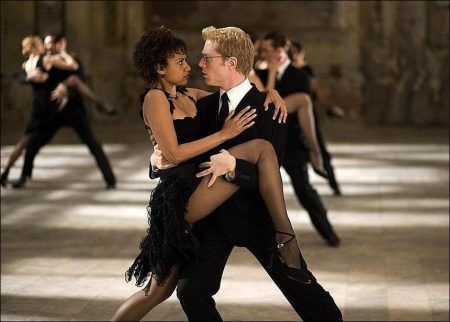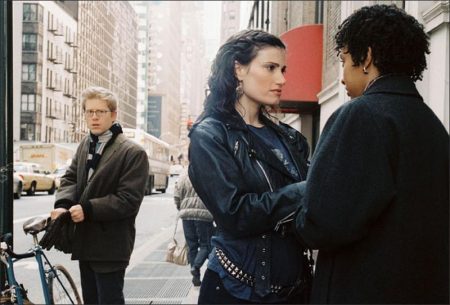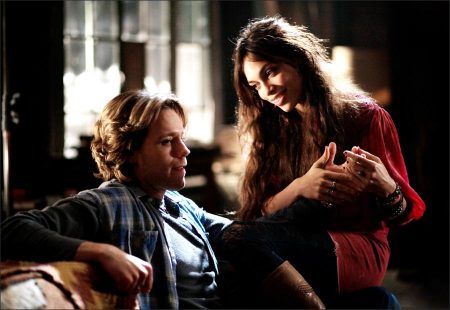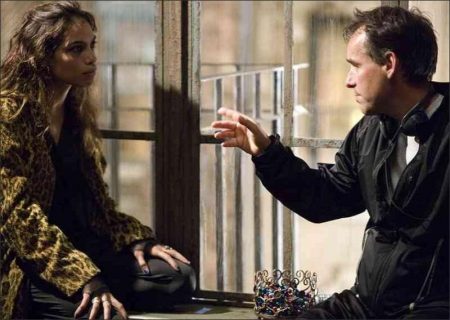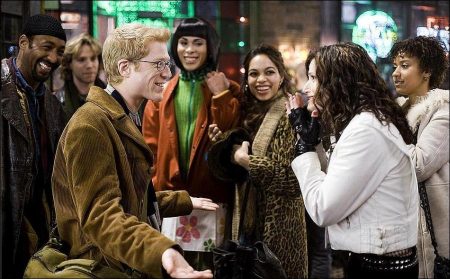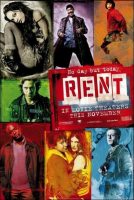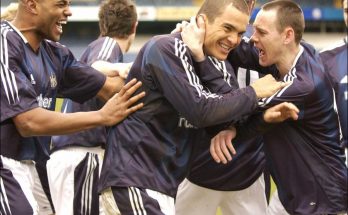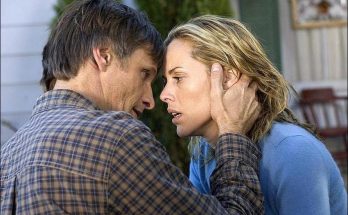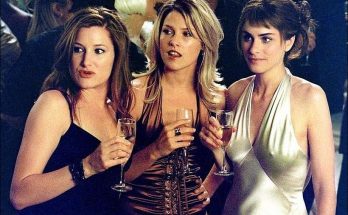About the Production
Inspired by Puccini’s classic opera “La Boheme,” “Rent” won the 1996 Pulitzer Prize for Drama, the Obie Award, the New York Drama Critics Circle Award, four Tony Awards and three Drama Desk awards — all following the tragic, untimely death of its creator, Jonathan Larson, who passed away of an aortic aneurysm on the eve of the play’s first preview. The play went on to become a phenomenal success — launching the careers of its stars and bringing a sense of excitement back to Broadway by introducing a young and eager audience to a musical theater work that carried with it a message of hope and love.
“Jonathan was not only able to entertain people, he also wrote a show that had meaning to it and was pertinent to people’s lives, especially to young people’s lives,” comments his sister and the film’s co-producer Julie Larson. “I think he had a very clear vision and a sense that he could do this, and that the American musical would die if someone didn’t come along to bring younger people into the theater.”
“I think ‘Rent’ is a mouthpiece for young people,” comments Rosario Dawson, who assumes the role of Mimi in the film version. “I think the reason they are so attached to it is because it encapsulates what they are trying to communicate. It speaks to their attempt at leaving convention behind and how they’re trying to figure out their lives. It allows young people the opportunity to say — I am who I am. And when they see the show, which celebrates that, they feel a kinship to it. It gives them a space and a forum to voice these different ideas and maybe even to articulate them a little bit better.”
Playwright Larson created genuine characters who were dealing with real concerns and issues. These characters came alive for the audience in an authentic way that earned the affection and captured the imagination of the audience. “Jonathan put real characters in this musical,” comments Wilson Jermaine Heredia who won a Tony Award for the role of Angel. “They are all taken from people he knew, mostly writers and artists and singers. I think that’s why people have been impacted so much — because he used real characters.”
The importance of the message was not lost on any of the cast members during the play’s early days. Transforming Larson’s vision from its initial workshop project to the demanding and dizzying heights of a major Broadway hit, was an experience unlike any other for this ensemble of actors.
“We went through hell doing the show,” recalls Jesse L. Martin, who originated the role of Tom Collins. “I mean, when we started down at the New York Theater workshop, we had Jonathan Larson with us. Then we lost him at the beginning of the performance process. But everybody rallied together and decided that we were going to make sure this story remained vibrant and important and energetic.”
Idina Menzel, the stage play’s original Maureen, adds: “Jonathan’s passing bonded us. We all embarked on this mission to put forth his story and his music. It took us out of being selfish and worrying about things like how our careers were doing and where we were going. It was more about him and how important it was for people to hear what he was trying to say.”
Perhaps no moment in the show crystallizes this journey better than Larson’s song “No Day But Today,” Menzel continues. “To sing those lyrics on stage every night, knowing what we had gone through and knowing that the audience knew what we had gone through, was like a transcendental experience for everyone. The energy that came back at us every night was just incredible.”
“Jonathan got to the core of something,” adds Anthony Rapp, who played Mark onstage and reprises his role in the movie. “He told the truth about what it was like to live in that day and age in New York. He told the truth about what it was like to struggle and to lose people you love and to be afraid of losing people you love. When you’re in the presence of something true, I think it is unusual and powerful. And I don’t believe people say things like they’ve said to us over the years without meaning them — like ‘This show changed my life” and “Thank you for making a difference to me.’ People rarely volunteer those kind of statements.”
“The material is the star,” adds newcomer Tracie Thoms, who steps into the role of Joanne in the film. “There’s nothing we can do, there’s nothing any of us can be, that would overshadow the story and Jonathan. We’re here to serve Jonathan and the play. And we’re here to serve all the fans that were touched and moved and saved by the play.”
“Rent” is currently the eighth longest-running show in Broadway history with almost 4,000 performances to date. Around the world, productions of “Rent” have been staged in Australia, Canada, Estonia, Germany, Hungary, Ireland, Italy, Japan, Mexico, the Netherlands, the Philippines, Scandinavia (Denmark, Finland, Iceland, Sweden), South Korea and the United Kingdom, with productions scheduled over the coming year in Belgium, Russia, China, Hong Kong, Singapore, South Africa, Malaysia, Taiwan and Thailand.
The Music, The Movement, The Message
Although many members of the cast were intimately familiar with the material, Columbus led them through an intensive pre-production rehearsal period in order to help them learn the new arrangements and the demands of adapting their performances to the screen. He was aided by music producer Rob Cavallo and with vocal conductor Tim Weil (who had worked closely with Jonathan Larson on the play as music supervisor).
Columbus knew from the start that he wanted the soundtrack to have a harder edge than the play’s arrangements — a genuine rock and roll core. Music producer Rob Cavallo began working in this direction with five skilled rock musicians on drums, bass, two guitars and a keyboard, and recorded the new arrangements at El Dorado Studios in Los Angeles.
“They tracked the music like a rock band, not like one would do a traditional score,” comments Barnathan. “Cavallo got this band in a room and they just dug these songs out until they really rocked, which was very exciting for Chris since he wanted the music to have an authentic sound.”
“Creative people bring creativity to a process no matter where it is in the development process,” says Weil, who began working with Jonathan Larson as the audition pianist, but was asked to stay on as music director of the play.
“Rob’s work has always been very inspiring,” he continues. “These guys who played the music are fantastic L.A. studio musicians, real veterans who also brought their own creativity to it — filtered through Rob’s sensibility as a producer. It was like a breath of fresh air, a whole different take on the material that’s unbelievably great.”
While the music was being recorded in Los Angeles, Tim Weil was working with the cast members in San Francisco, preparing them to record the vocals. “There were things Tim had always wanted to alter in the music, and others he was sure he wanted to remain exactly the same — things that Jonathan had been very adamant about,” comments Thoms. “Tim was instrumental in keeping the magic of all the music but expanding it a little bit and doing some experimentation.”
The recorded music was brought to northern California where the cast added the vocal tracks at Skywalker Sound. This process took 28 days, during which time, each actor worked diligently with Weil.
“At Skywalker, where we recorded the voices,” says Barnathan, “everyone was excited and nervous — the six cast members who had done the show 10 years earlier. For them it was like they were coming back to a place they never expected to return to.”
The soundtrack, which was finished prior to the commencement of principal photography (with the exception of strings and horns, which were added later), became a vital part of each scene. The actors sang and/or lip-synced to the prerecorded music as they added dance elements to their performances, which were created and designed by veteran choreographer, Keith Young.
“I began the process by going to New York and seeing the show,” says Young. “In fact, I went back several times so I could get all I could from the play and could correctly interpret what Larson had created and attempt to capture the show’s essence. Working with a skeleton crew of eight dancers, I worked out each dance and showed it to Chris to use as a point of departure in our conversations. That allowed us to explore and grow from there.”
In approaching the design of each dance, Young would ask himself certain essential questions: “Is this movement telling the story? Can someone watch this with no music, no lyrics, no principals and still get the story? Until the answer was yes, I kept striving to make that happen.”
To accentuate the emotional force of the “Tango Maureen” number, for instance, Young had to design a dance that would not only be appropriate for the characters of Mark, Joanne and Maureen but also maintain the fire and emotion of the song.
The tango, like all the musical numbers in the film, had to do double duty — serve the narrative by expressing the emotion of the scene and give the audience some information about the characters. “How would this guy — who is rather nebbishy — see it?” Young asked himself. “He’s been in love with Maureen who cheated on him, yet he’s still generous and willing to help her. I needed to think about how he would face what was basically his biggest nightmare … and yet a beautiful nightmare.”
The dance, which is often referred to as the “Dance of Love,” is filled with dramatic movement. “Everyone, the principals and even the couples farthest from the camera, had to articulate the tango as one,” says Young. “Fortunately, I found exceptional dancers who possessed the beauty, charisma and versatility to do the dance and, at the same time, tell the story.”
The cast and filmmakers agreed that the lyrics, coupled with the music and dance movements, all worked together to expressively and fully convey the story of this group of bohemians. Although some dialogue was added to the script for the film, the majority of the story is still told through music, since it’s Larson’s music and lyrics that made the material accessible to a large audience out for an evening of theatrical entertainment. Larson’s words and melodies transcended barriers and helped everyone who saw the play empathize with the difficulties each character faced — AIDS, homelessness, drug addiction, homosexuality, creative frustrations and loss. At the same time, the energy and vitality of the words and music infused the characters — and the audience — with hope, allowing the characters to celebrate their love and hopes for renewal.
“I’m proud to be affiliated with a project that deals with so many pertinent issues in today’s society. I’m also honored to be playing a part in the legacy of writer and friend Jonathan Larson,” says Diggs.
“I think there’s something in the music for Rent that allows people to open up in a way that they wouldn’t if they were just talking,” adds Martin. “If I just told you that I have AIDS and that I’m probably going to die and this is my girlfriend who is a drag queen, it just wouldn’t be the same. But because we’re singing about it, what I’m saying seems a bit easier to take.”
“Music has a weird way of sneaking up on people and making them feel something they wouldn’t necessarily feel if they were being preached at,” adds Menzel. “Through chords and notes and voices, it conveys a kind of truth that’s more than just words.”
“I think ‘Rent,’ is very different from other musicals being translated to film,” says Heredia. “The stage musical was an anti-musical. And I believe that this is going to be an anti-musical movie. It doesn’t have big flashy numbers for the sake of being big and flashy. Every single number actually tells the story.”
Rent began shooting exteriors in and around New York City, then moved to San Francisco, where interior scenes were shot at production facilities on Treasure Island, the Paramount Theatre in Oakland, the old train station in Oakland, the Alameda Soundstages and the Filoli Estates in the nearby suburb of Woodside.
The crew moved to Los Angeles in early June where they shot for ten nights on Hennessey Street on the back-lot at Warner Bros in Burbank. This set served as the backdrop for several songs including the show’s title number for which the cast was joined by more than 300 extras including stunt people hanging off fire escapes and dancing on cars. Principal photography ended after two days of location work in Santa Fe, New Mexico.
Rent (2005)
Directed by: Chris Columbus
Starring: Idina Menzel, Anthony Rapp, Adam Pascal, Taye Diggs, Rosario Dawson, Tracie Thomas, Julia Roth, Mackenzie Firgens, Ken Clark, David Fine, Vivis Colombetti
Screenplay by: Chris Columbus
Production Design by: Howard Cummings
Cinematography by: Stephen Goldblatt
Film Editing by: Richard Pearson
Costume Design by: Aggie Guerard Rodgers
Set Decoration by: Barbara Munch
Art Direction by: Keith P. Cunningham, Nanci Noblett
Music by: Jonathan Larson
MPAA Rating: PG-13 for mature thematic material involving drugs and sexuality, and for strong language.
Distributed by: Columbia Pictures
Release Date: November 23, 2005
Visits: 158
